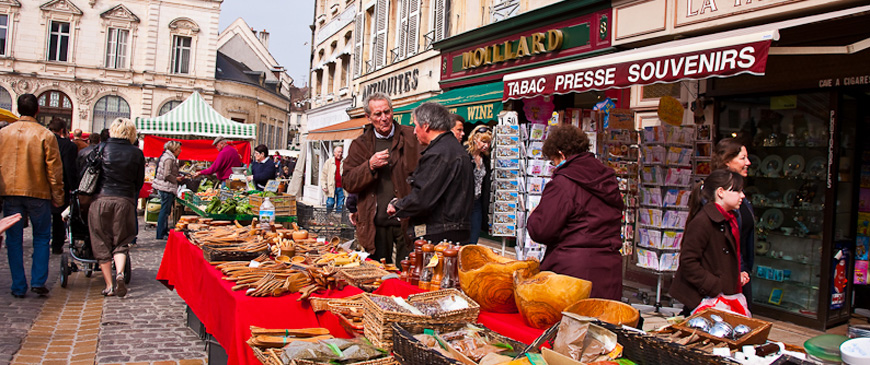
Some Trip Highlights
• After-hours guided visit of the Hospices de Beaune followed by Grand Cru wine tasting in the Hospices’ private cellars.
Hospices de Beaune
The Hôtel-Dieu was inaugurated on the 4th August 1443. The Hundred Years War was in abatement after the signing of the Treaty of Arras in 1435. The massacres, however, continued and the "écorcheurs" ("skinners") were still roaming the countryside, pillaging and destroying, provoking misery and famine. The majority of the people of Beaune were declared destitute. Nicolas Rolin, Chancellor of Duke Philip the Good of Burgundy, and his wife Guigone de Salins reacted by deciding to create a hospital for the poor.
The hospital received its first patient on 1st January 1452. Elderly, disabled, orphans, sick people, women about to give birth, the destitute were all received and treated from the Middle Ages to the 20th century. The hospital Sisters dispensed their care without cease. For centuries, they remained the very essence of the Hôtel-Dieu.
Throughout all this time, the hospital radiated outwards and federated other establishments in Pommard, Nolay, Meursault and Beaune constituting a veritable community called "Hospices de Beaune".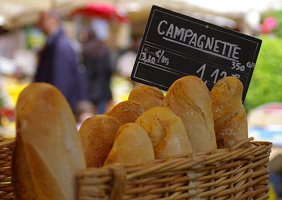
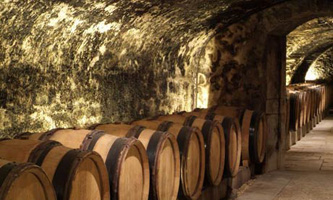
• Wine-tasting at Domaine des Comte Lafon with a vertical tasting of Le Montrachet.
Domaine des Comte Lafon
The domaine dates back to the building of the house and cellar at Clos de la Barre by the Boch family in 1869. However the real creator was Comte Jules Lafon who was shrewd enough to purchase exceptionally well sited plots in the best vineyards of Meursault and Volnay, as well as a treasured piece of Le Montrachet acquired in 1919.
Dominique Lafon has been in charge since 1985, taking over a domaine which already had a reputation for outstanding, if irregular whites, and potentially good reds. The white wines are now consistently among the best in Burgundy while since 1989 the reds have reached the top division. The domaine is now cultivated according to biodynamic principles.
• Morning wine school with a Master of Wine.
• Visit of one of Burgundy’s long established fine wine companies, Maison Louis Jadot, for a tasting followed by dinner.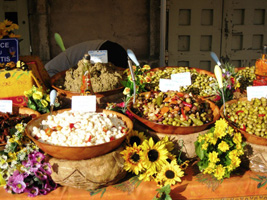
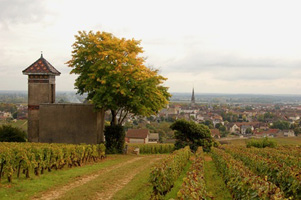
• Market visit followed by cooking class using the ingredients we bought at the market.
• Visit of the ancient Roman cellars at Maison Joseph Drouhin where we will try a few of their delicious wines followed by lunch.
Maison Joseph Drouhin
Originally from the Yonne department, Joseph Drouhin founded the negociant company which bears his name in 1880. His son Maurice took over in 1918, buying the first vineyards including the famous Beaune Clos des Mouches. His eventual successor was his nephew and adopted heir Robert Jeausset Drouhin who took charge in 1957. Robert Drouhin now retains a surveillance role while his children Frédéric (managing Director), Laurent (export markets), Philippe (vineyards) and Véronique (oenology & Domaine Drouhin Oregon) run the business. Long time oenologist Laurence Jobard, engaged by Robert Drouhin in 1973, has recently retired and been replaced by Jerome Faure-Brac, with Véronique Drouhin’s expertise on hand to provide continuity of style.
• Vineyard visit of Clos des Epeneaux with Benjamin Leroux followed by a tasting at Domaine du Comte Armand, owner of the Clos des Epeneaux.
Clos des Epeneaux
The family of the Comte Armand has owned the vineyard of Clos des Epéneaux and the winery buildings in Pommard since 1826 when Jean-François Armand married Clothilde Marey. Unfortunately the vineyard was not replanted after phylloxera until 1930, but since then it has confirmed its rating as one of Pommard’s very finest sites.
Pascal Marchand, a young Quebecois from the merchant marine, made the wines here from the 1985 to 1998 vintages inclusive. In 1999 he was replaced by Benjamin Leroux, who had worked part time at the domaine since 1991 when he was fifteen.
After years of organic farming, the domaine is now biodynamic. The Clos des Epeneaux is being worked by horses while various fruit trees, roses and other plants have been introduced along the walls.
• Gastronomic tour of Dijon followed by a special mustard tasting.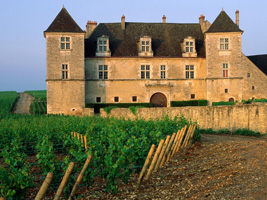
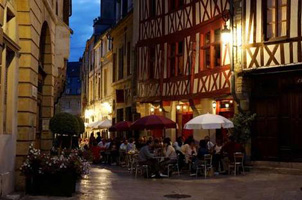
• Chocolate making class with one of the only Maitre Chocolatier in the region.
• After-hours visit of the renowned Château du Clos de Vougeot, once property of the Abbey of Cîteaux and the Cistercian monks and now the seat of the Confrérie des Chevaliers du Tastevin.
Château du Clos de Vougeot,
Just outside the village of Vougeot, the Château du Clos de Vougeot stands splendidly amidst its grand crus vineyards. The genesis of the Clos de Vougeot lay in a small gift of land in the year 1110 to the monastery of Cîteaux. But the vineyard took its present form in 1336 when the monks enclosed the estate that had grown substantially as a result of further gifts and land-swaps. They built a press-house and cellar in the austere style of their order then, in 1551 Dom Losier, the 48th Abbot, constructed the present château as a center for receiving guests. After the Revolution and dissolution of the monasteries, the Clos remained in the hands of different single owners until 1860 when it was divided extensively. There are now more than 50 separate owners.
• Wine-tasting with winemakers and co-owners Alec and Jeremy Seysses at Domaine Dujac in Morey-Saint-Denis.
Domaine Dujac.
In November 1967 the young Jacques Seysses bought a small domaine based in Morey St Denis and renamed it after himself – Domaine Dujac. The first vintage, 1968, was one of the worst years on record so the wines were sold off in bulk, but 1969 was an entirely different matter, putting the domaine firmly on the map. In 1973 Jacques married Rosalind Boswell, a Californian girl who came to work the vintage and stayed for life. The first two of their three children, Jeremy (born 1975), Alec (1977) and Paul (1980) are now involved in the business, as is Jeremy’s wife Diana, also Californian, and a trained oenologist.
Dujac wines are not necessarily the deepest in colour but are noted for their exceptional fragrance, structure and longevity. With seven grand crus in the stable, and the wisdom and energy of two generations at the helm, Domaine Dujac is today one of Burgundy’s greatest domaines.
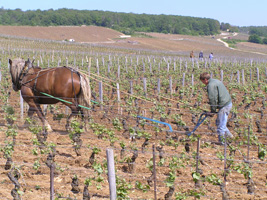
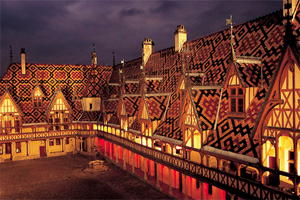
• Tasting lunch at Clos des Lambrays with winemaker Thierry Brouin.
Clos des Lambrays
Previous owner Madame Cosson was too grand to apply for grand cru status for Lambrays, even though labels from the turn of the century had described the Clos as Grand Cru Classé as if in Bordeaux. After her death in 1977 things moved relatively rapidly. The Saier brothers, with other initial investors, bought the property in 1979, installed Thierry Brouin as manager, began a significant programme of replanting and modernisation, applied for grand cru status and received it rapidly, on 27th April 1981.
All this was heavy investment and in due course the Saier brothers sold the property on to the Freund family of Koblenz in 1996, with Thierry Brouin continuing as general manager and winemaker.
As well as the grand cru itself, the Domaine also owns vines in premier cru and village vineyards in Morey, along with two premier cru vineyards in Puligny Montrachet, Les Folatières and Clos du Cailleret, purchased from Domaine Chartron.
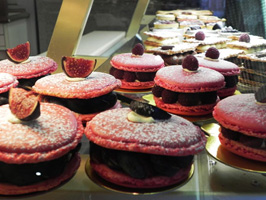
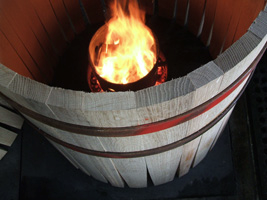
• Guided visit of the François Frères cooperage in St-Romain.
François Frères cooperage
François Frères is Burgundy’s leading cooperage, supplying the Hospices de Beaune, Domaine de la Romanée Conti, Leroy and many other of the greatest producers. The company was founded in St Romain in 1910 by Joseph Francois, grandfather of the current president, Jean François, who celebrates 50 years with the company this year.
• Gala dinner at the Michelin *** restaurant Lameloise in Chagny where a sumptuous meal will be prepared for us in a delightful private room, accompanied by some magnificent Burgundian bottles.

